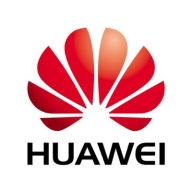

Nagios XI and Huawei eSight compete in the network monitoring category. Nagios XI holds the upper hand with its extensive customization options and open-source nature, whereas Huawei eSight's integration with Huawei devices is a clear advantage for that specific ecosystem.
Features: Nagios XI offers extensive customization options with a wide range of plugins. It provides monitoring for system performance such as CPU usage, memory utilization, and network services. Nagios supports custom plugins and scripting to enhance functionality. Huawei eSight consolidates network monitoring and management with easy integration with Windows servers. It offers real-time location monitoring and is recognized for reliable infrastructure monitoring focused on Huawei environments.
Room for Improvement: Nagios XI faces challenges with configuration complexity and plugin management due to difficult integration without standard API support. Users suggest improvements in interface intuitiveness and reporting tools. Huawei eSight could enhance automation features and expand integration capabilities beyond Huawei devices. Its flexibility and customization options could be improved to support diverse network environments better.
Ease of Deployment and Customer Service: Nagios XI supports various environments including private and public clouds, with robust community support. However, its customer service can be costly with inconsistent response times. Huawei eSight is usually deployed on-premises, with straightforward implementation within Huawei ecosystems. Nagios benefits from community support while Huawei eSight could improve its customer service to enhance user satisfaction.
Pricing and ROI: Nagios XI offers a cost-effective open-source product with competitive enterprise-level pricing, viewed as good value given its capabilities. The flexibility in licensing and renewals is an advantage. Huawei eSight's pricing is competitive but may increase with advanced feature usage. Users find both valuable depending on specific environments, with ROI comparisons contingent on tailored needs and cost assessments.
| Product | Market Share (%) |
|---|---|
| Nagios XI | 3.0% |
| Huawei eSight | 0.9% |
| Other | 96.1% |


| Company Size | Count |
|---|---|
| Small Business | 5 |
| Midsize Enterprise | 4 |
| Large Enterprise | 1 |
| Company Size | Count |
|---|---|
| Small Business | 22 |
| Midsize Enterprise | 17 |
| Large Enterprise | 21 |
Huawei's eSight is a unified software suite for planning, operating, and maintaining complex enterprise ICT infrastructure from global, converged networks and data centers to multimedia and video communications that includes the facilities necessary for delivering performance and IT services. eSight provides a platform that supports infrastructure and devices from third-party providers, to develop custom management applications and improves O&M efficiency.
Nagios XI provides monitoring of all mission-critical infrastructure components, including applications, services, operating systems, network protocols, systems metrics, and network infrastructure. Third-party add-ons provide tools for monitoring virtually all in-house and external applications, services, and systems.
Nagios XI uses a powerful Core 4 monitoring engine that provides users with the highest levels of server monitoring performance. This high degree of performance enables nearly limitless scalability and monitoring powers.
With Nagios XI, stakeholders can check up on their infrastructure status using the role-based web interface. Sophisticated dashboards enable access to monitoring information and third-party data. Administrators can easily set up permissions so users can only access the infrastructure they are authorized to view.
Nagios XI Benefits and Features
Some of the benefits and top features of using Nagios XI include:
Reviews from Real Users
Nagios XI stands out among its competitors for a number of reasons. Several major ones are its integration options and monitoring abilities, as well as its alerting features.
David P., a senior DevOps engineer at EML Payments Ltd, writes, “We use Nagios as a network discovery tool. We use Nagios to maintain our uptime statistics and to monitor our services. It has allowed us to be much more sophisticated in our monitoring and alerting.”
An IT-OSS manager at a comms service provider notes, “Nagios XI has a custom API feature, and we can expose custom APIs for our integration. This is a great feature.”
We monitor all IT Infrastructure Monitoring reviews to prevent fraudulent reviews and keep review quality high. We do not post reviews by company employees or direct competitors. We validate each review for authenticity via cross-reference with LinkedIn, and personal follow-up with the reviewer when necessary.